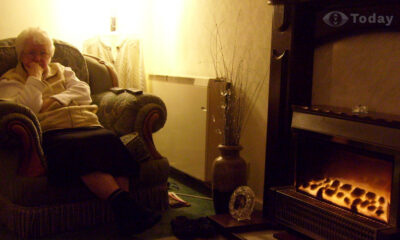Your sofa isn’t just a centrepiece of comfort—it’s also a silent factor in your home’s energy efficiency…
Think your energy bill is high? Your sofa could be part of the problem – adding as much as £200 a year to your costs without you even realising. Experts warn that the way you arrange your furniture, the materials used in your upholstery, and even where you place your sofa could be trapping heat, blocking radiators, and forcing your heating system to work overtime.
According to elite property experts from Luxury Serviced Apartments, many households are unknowingly sabotaging their home’s energy efficiency. “People focus on insulation and double glazing, but something as simple as your sofa placement could be making a significant impact,” they reveal.
1. Your Sofa Is Blocking Heat Flow
One of the most common mistakes is placing a sofa directly in front of a radiator or heat source. While it may feel cosy, it’s actually absorbing a huge portion of the heat that should be circulating around the room.
🔹 The Impact: Studies suggest that blocked radiators waste up to 25% of the heat they generate, meaning you could be paying significantly more to heat your home without feeling the full benefit.
🔹 The Fix: Ensure there is at least 6 inches (15 cm) of space between your sofa and any heat source. This allows warm air to circulate freely and prevents heat from getting trapped behind bulky furniture.
2. Heat-Trapping Fabrics Are Making Your Home Colder
The materials in your sofa could also be working against you. Thick, dense upholstery like leather or velvet absorbs and retains heat, meaning less warmth is being distributed around the room.
🔹 The Impact: If your sofa absorbs a large amount of heat, you might find yourself turning up the thermostat unnecessarily, which could be adding hundreds of pounds to your annual energy costs.
🔹 The Fix: Opt for sofas with breathable fabrics, such as linen or cotton blends, which don’t trap heat as much. If replacing your sofa isn’t an option, use heat-reflective radiator panels behind your heating source to redirect warmth back into the room.
3. Cold Draughts Are Settling Around Your Sofa
Where you position your sofa determines how warm or cold you feel. If it’s too close to a window, external wall, or doorway, you could be sitting in a constant draught without realising it.
🔹 The Impact: Draughts can lower room temperatures by several degrees, tricking your thermostat into thinking it needs to work harder. The result? Higher heating bills.
🔹 The Fix: Keep your sofa away from cold walls, doors, and windows where possible. If repositioning isn’t an option, add a thermal throw over your seating area to retain warmth and reduce heat loss.
4. Oversized Sofas Are Shrinking Your Heating Efficiency
Larger sofas might be great for comfort, but they can also disrupt air circulation in smaller rooms. If a bulky sofa dominates the space, it can prevent warm air from evenly distributing, creating hot and cold spots that cause your heating system to overcompensate.
🔹 The Impact: An inefficiently heated room could increase your energy usage by up to 30%, according to home energy experts.
🔹 The Fix: If you have a large sofa in a small room, consider rearranging your furniture to promote better airflow. Use strategic seating arrangements that don’t block vents or create heat traps.
5. Your Sofa’s Cushion Density Affects Warmth
Believe it or not, even the cushions on your sofa influence how warm you feel. Sofas with firm, dense cushions provide better insulation compared to older, sagging cushions that let cold air settle in pockets around you.
🔹 The Impact: If your sofa doesn’t retain warmth effectively, you’re more likely to turn up the heating, leading to higher energy bills over time.
The Fix: If replacing your sofa isn’t an option, add insulated cushions or throws to increase warmth. Using heated blankets or thermal covers can also help reduce reliance on central heating.









